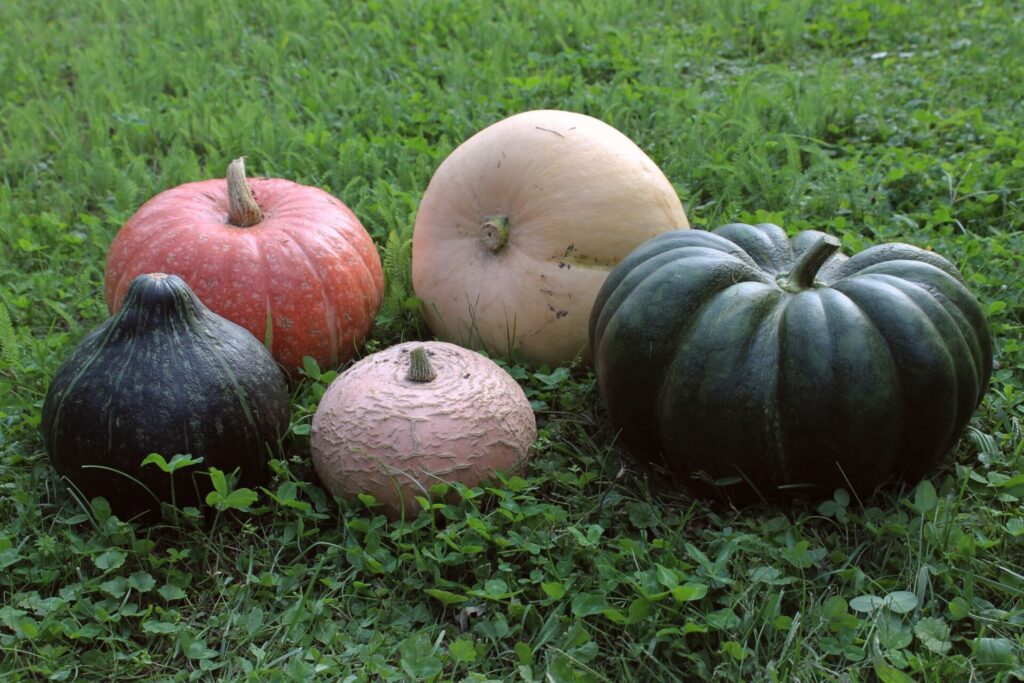There are 4 main types of pumpkins: Pepo, Moschata, Maxima and Mixta. These large groups are further divided in dozens of species.
In general, pumpkins belong to the plant family called Cucurbitaceae, or cucurbits for short. Cucurbits contain four sub-groups with all the different pumpkins we use for lanterns, pumpkin pies, and winning prizes at county fairs.
Cucurbits include a total of around 960 distinct species of plants, including melons, summer squash, cucumbers, winter squash, decorative gourds, and all varieties of pumpkins.
Pepo – Orange, green, small and medium size, used for carving, pies, cooking.
Moschata – Tan, yellow, medium size, used for pies, carving.
Maxima – Orange, blue and blue-green, small to large size, used for carving, winning prizes.
Mixta – Orange, blue, red, multi-color, small to medium size, used for decoration, cooking.
Varieties:
Baby Pam – excellent for pumpkin pie with a smooth-skinned fruit also suitable for painting or carving. You’ll find dark orange inside and outside.
Early Sugar Pie – a classic New England style variety for pies. It has a string-less interior with bright orange flesh that also carves well.
Winter Luxury – a popular pepo heirloom weighing around 6 lb (2.7 kg). with a netted, buff-orange skin and sweet flesh.
Orange Princess – a fast-growing variety with slightly flattened fruits and deep-orange flesh and fruit averaging 5 lb (2.27 kg). each.






